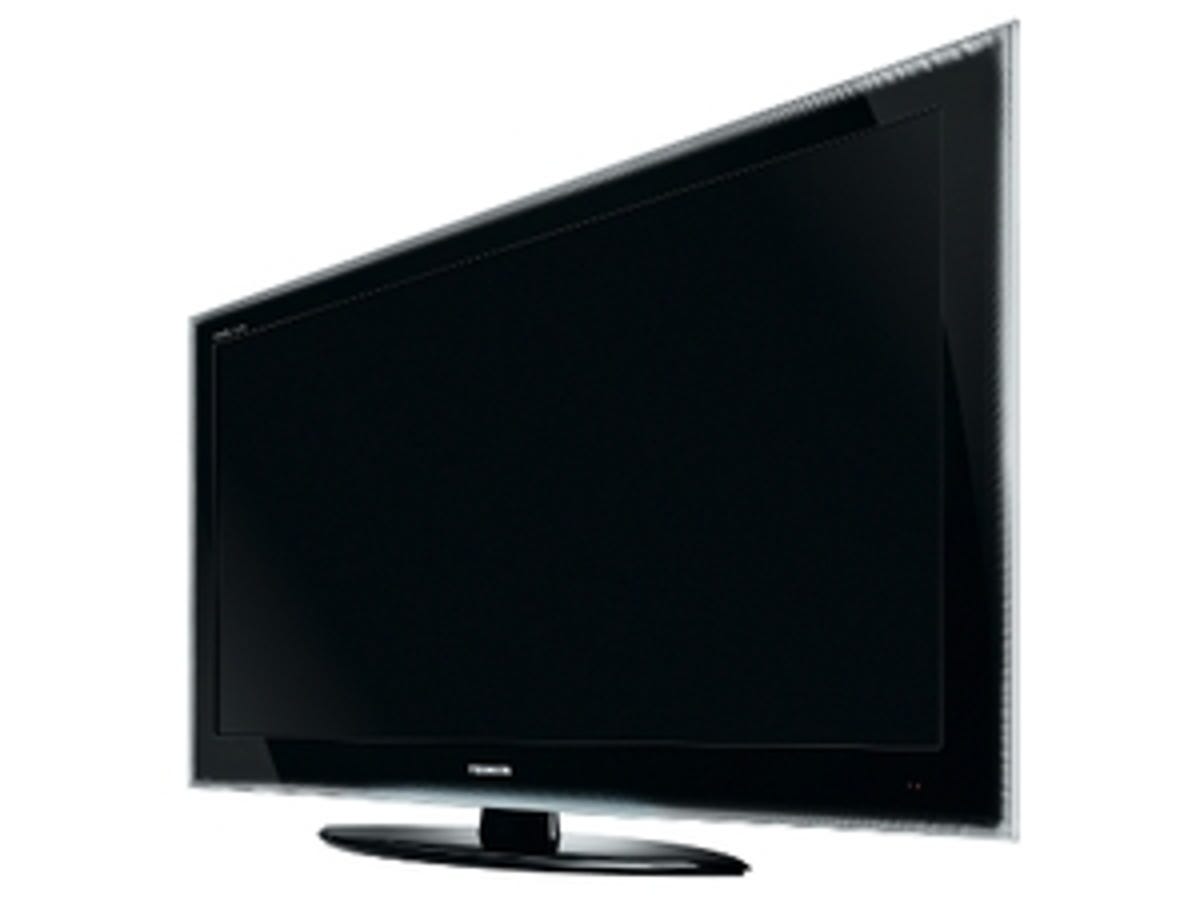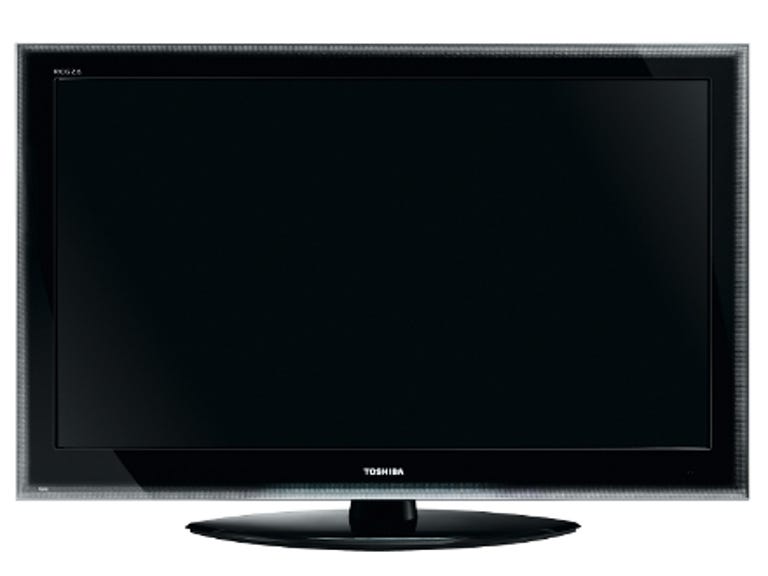 Why You Can Trust CNET
Why You Can Trust CNET Toshiba Regza ZV (42ZV635DB) review: Toshiba Regza ZV (42ZV635DB)
Packing plenty of picture-processing chops, the 42-inch, 1080p Regza 42ZV635DB's motion-handling capability is the best we've seen so far on a Toshiba LCD TV. The set's black levels could be better, but it offers an opulent design, good connectivity and a great deal of picture flexibility
If you want to be taken seriously as a TV manufacturer these days, it seems 100Hz processing isn't enough. Instead, 200Hz, 400Hz or even 600Hz processing is required. One of the few key brands missing from the high-Hz party so far has been Toshiba. But that's a situation the company has rectified with the 42-inch, 1080p Regza 42ZV635DB LCD TV, which sports 200Hz processing. It's available for around £850.
The Good
The Bad
The Bottom Line
Refined exterior
The first thing that strikes you about the 42ZV635DB is that it doesn't follow Toshiba's usual design template. The finish is more glass-like, and the bezel's outer edges shift from black to a neat smoky grey finish. Although this doesn't make the TV an absolute design classic, especially as both its bezel and its butt are quite large by current LCD standards, it does at least make the set look reassuringly expensive.
The 42ZV635DB's connections are more than acceptable. Four HDMI ports should satisfy most users' high-definition needs, plus there's a PC jack, an SD card slot for JPEG playback, and a USB port via which you can play JPEG, MP3 and DivX video files.
Picture-processing chops
The key 200Hz engine of the 42ZV635DB, designed to tackle LCD's usual motion-blurring and judder problems, uses a combination of a scanning backlight and 100Hz processing to achieve its effect. The 200Hz engine forms part of Toshiba's proprietary Active Vision M200HD processing system.

Other elements of this system work on boosting fine detail, contrast and colours, and there's further processing support from Toshiba's redoubtable Resolution+ engine, for enhanced upscaling of standard-definition material to 1080p screens like the 42ZV635DB's.
Happily, all the chief elements of the 42ZV635DB's processing can be adjusted considerably via the TV's simple and rather bland on-screen menus. There are plenty more tweaks to get your teeth into if you wish, such as a 3D colour-management system, two different noise-reduction modes, a 'static gamma' setting, and even an 'expert' option that allows you to switch on or off the red, green and blue colour elements in the picture, for more accurate colour calibration.
The 42ZV635DB even attempts to go the extra mile with its sound, thanks to both a Dolby Volume system for equalising volume levels between channels and programmes, and an Audyssey EQ mode designed to make sure the sound the TV produces is continually optimised to suit your listening environment.
Motion-handling prowess
When we set about trialling the 42ZV635DB's pictures, it quickly became clear that its 200Hz engine -- despite, arguably, not being a true 200Hz engine -- helps it deliver the best motion-handling we've seen on a Toshiba LCD TV yet. There really is scarcely the slightest trace of LCD technology's usual motion-blur problem, even during full-tilt action scenes or sporting footage.
Even better, this motion sharpness is produced without the TV generating such common processing-related artefacts as blocking or haloing around moving objects. There are, we must say, screens out there that reduce judder more emphatically than the 42ZV635DB. But the Active Vision M200HD system certainly reduces judder enough to stop it from being distracting, aside from an occasional momentary pause when watching 1080p/24p material.
Picture shortcomings
It's a pity, then, that the 42ZV635DB's motion-handling prowess isn't matched by similar quality elsewhere. Particularly upsetting is the screen's contrast, at least as concerns dark scenes. There's a grey look to supposedly black picture components, which leaves dark scenes feeling flat and undetailed. This situation is exacerbated if you're forced to watch the screen from much of an angle.
You can improve the situation with some careful adjustment of the TV's backlight and brightness settings, but then you're left with a picture that's noticeably less dynamic and bright than that of many rival LCD sets at the 42ZV635DB's price point.
The 42ZV635DB is certainly not the first of Toshiba's current TVs that suffer from black-level limitations. But, while such limitations might be acceptable on some of Toshiba's ultra-cheap models, they're really disappointing on a high-spec machine like this.
Also, the 42ZV635DB's colours don't seem quite as natural or dynamic as we'd like them to, and, while the set does a pretty good job of revealing the extra detail inherent in HD sources, some finely detailed shots can look rather flickery, due to the scanning backlight system. The 42ZV635DB's audio isn't great either, due to a lack of genuine bass that can leave trebles sounding harsh and unbalanced.
Conclusion
Although Toshiba's debut 200Hz engine helps the Regza 42ZV635DB give a generally good account of itself so far as motion-handling is concerned, the set's susceptibility to other common LCD problems -- in particular, poor contrast and viewing angles -- ultimately leaves it feeling rather lacking compared to many of its similarly specified rivals.
Edited by Charles Kloet
